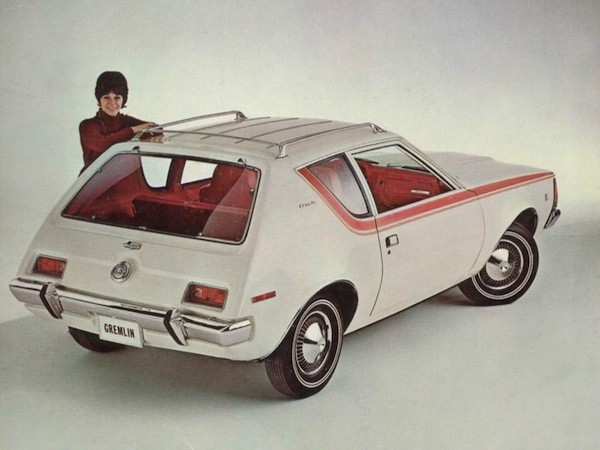The early 1970s marked a significant shift in the automotive landscape. The muscle car era, known for its powerful engines and flamboyant designs, was rapidly losing momentum due to factors like rising gas prices, soaring insurance costs, and stricter emissions regulations. In its place emerged a new breed of compact cars, designed for fuel efficiency and affordability. Among these, the AMC Gremlin Car stands out as a particularly distinctive – and often debated – example.
Alongside models like the Chevy Vega and Ford Pinto, the Gremlin arrived on the scene as an attempt by Detroit automakers to cater to a changing market. While these cars were intended to be economical solutions, they often fell short in terms of build quality and long-term reliability, inadvertently paving the way for the rise of Japanese and European imports in the US market. Despite its contemporaries’ shortcomings in areas like engine durability (Vega) and safety (Pinto), the Gremlin car carved out a unique niche, primarily due to its polarizing and unconventional styling.
The Gremlin car, in many ways, was a product of its time. Born from the energy crisis, it was designed to be a no-frills, budget-friendly vehicle. However, unlike the Vega and Pinto, which faced serious criticisms regarding mechanical and safety issues, the Gremlin’s primary controversy revolved around its aesthetics. While the Vega suffered from engine problems and the Pinto became infamous for fuel tank safety concerns, the Gremlin car was often simply labeled as “ugly.”
Despite the jokes and negative press, the AMC Gremlin car wasn’t without its merits. Underneath the skin, it boasted a robust and reliable straight-six engine, which remarkably continued its production run as the Jeep 4.0 High Output engine until 2006. It also utilized Chrysler’s dependable TorqueFlite transmission. Furthermore, unlike its compact competitors, AMC offered the Gremlin X model with an optional 302 cubic inch (5.0 liter) V8 engine, providing a surprising performance punch in a small package.
The author of the original article shares a personal anecdote about his cousin trading in a beloved 1969 AMX muscle car for a brand new Chevy Vega due to rising insurance and gas costs, highlighting the era’s changing priorities. This personal experience underscores the context in which cars like the Gremlin emerged – a time when practicality and economy began to outweigh raw power and performance for many car buyers.
The article points out that while the Vega and Pinto became symbols of engineering and safety failures, the Gremlin’s legacy is tied to its divisive styling. It was even featured on lists of “ugliest cars” by publications like Business Week and Time Magazine, often grouped with other controversial designs like the Pinto, Vega, and Pontiac Aztek. However, the author argues that judging AMC solely on the Gremlin and the equally quirky Pacer is unfair, especially considering the company also produced iconic muscle cars like the Javelin, AMX, and Rebel Machine.
Interestingly, the author draws a parallel between the Gremlin car’s design and modern electric vehicles like the Nissan Leaf, suggesting that the Gremlin might have been ahead of its time in terms of its compact, hatchback-like profile. He posits that its “stubby, cut off, slanted rear-end” design is echoed in contemporary car designs focused on aerodynamics and efficiency.
Ultimately, the author embraces the Gremlin car’s unique appeal, describing it as “cute and quirky.” He sees it as a symbol of the 1970s, an era of bold fashion and cultural shifts. This perspective suggests a growing appreciation for the Gremlin, not in spite of its unconventional looks, but perhaps because of them. It’s becoming a retro icon, gaining a level of “coolness” that was largely absent during its initial production run.
The author concludes by revealing his ownership of a 1973 Gremlin X and musing about the possibilities of a “pro-touring” Gremlin build, implying a desire to blend classic AMC style with modern performance and handling. This personal connection and forward-thinking idea further elevate the Gremlin from just an “ugly duckling” to a potential platform for automotive creativity and individuality.
This journey from automotive punchline to potential icon highlights the fascinating and evolving perception of the AMC Gremlin car. It serves as a reminder that even the most debated designs can find their place in automotive history and, with time, even become objects of appreciation and retro-coolness.
